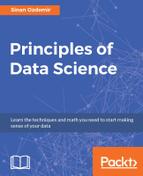It might seem worthless to stop and think about what type of data we have before getting into the fun stuff, like statistics and machine learning, but this is arguably one of the most important steps you need to take to perform data science.
Consider an example where we are looking at election results for a county. In the dataset of people, there is a "race" column that is denoted via an identifying number to save space. For example perhaps caucasian is denoted by 7 while Asian American is 2. Without understanding that these numbers are not actually ordered numbers like we think about them (where 7 is greater than 2 and therefore caucasian is "greater than" Asian American) we will make terrible mistakes in our analysis.Discuss
The same principle applies to data science. When given a dataset, it is tempting to jump right into exploring, applying statistical models, and researching the applications of machine learning in order to get results faster. However, if you don't understand the type of data that you are working with, then you might waste a lot of time applying models that are known to be ineffective with that specific type of data.
When given a new dataset, I always recommend taking about an hour (usually less) to make the distinctions mentioned in the following sections.
